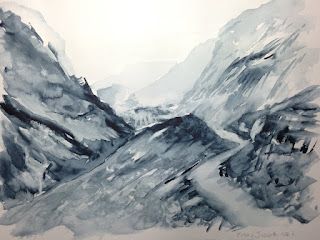Our venue will be St Michaels Centre in Elmwood Road, Chiswick W4 3DZ. The show will be for one day only, and all friends are cordially invited to the Private View from 6pm onwards, but failing that we hope to see you during the day from 10 am.
These are some paintings I will show. If you are unable to come to the showing and are interested in any of these, please contact me directly by email
 |
| Storm in Glen Muick, Cairngorms Acrylic paint on canvas 500 x 400 mm Framed £250 |
 |
| Chevin Woods above Otley, Yorkshire Oil on canvas 650 x 900 mm Framed £400 |
 |
| Insomnia Defeated Acrylic and oil on canvas 400 x 400 mm Framed £280 SOLD |
 |
| Brancaster Staithe, Norfolk Oil on canvas 500 x 400 mm Framed £300 |
 |
| Mt Arena, Fuerteventura Oil on canvas 400 x 400 mm Framed £280 SOLD |
 |
| Fuerteventura towards Lanzarote Oil on canvas 460 x 610 mm Framed £350 |
 |
| Doubtful Sound, New Zealand Oil on canvas 650 x 900 mm Framed £400 |
 |
| Baelo Claudia (IV) Oil on canvas 500 x 400 mm Framed £300 |
















